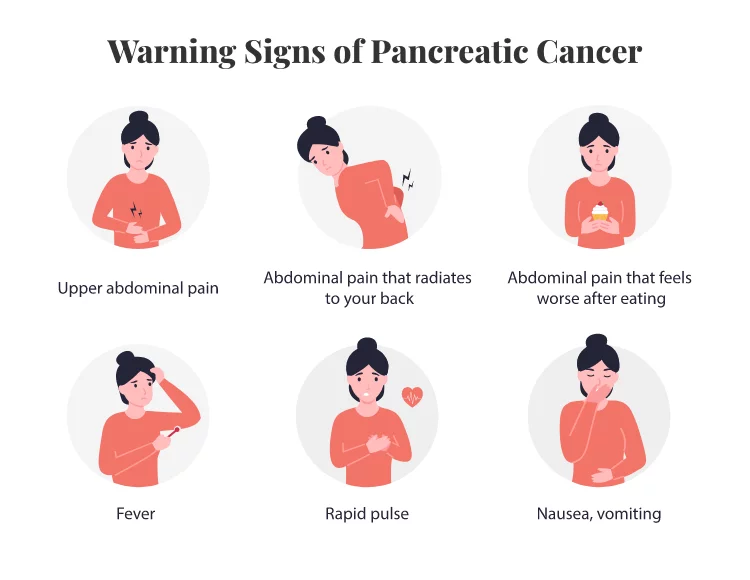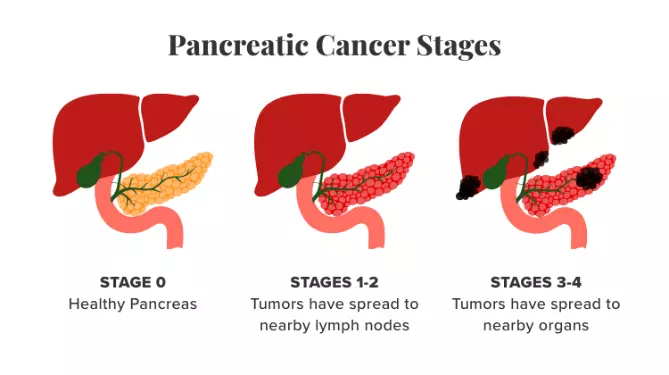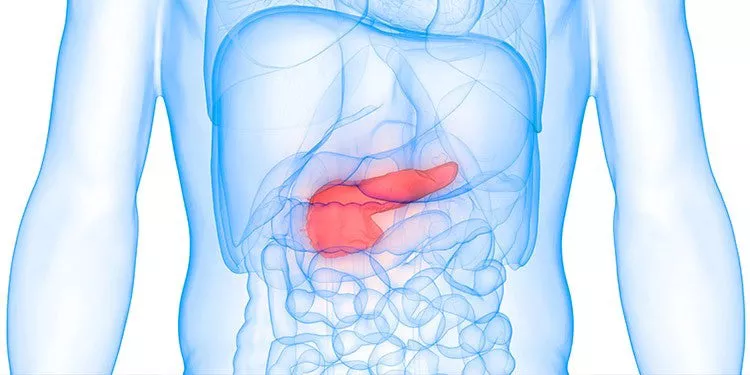The pancreas is the organ located just behind the stomach and uses enzymes to assist with digestion. According to the American Cancer Society, the average lifetime risk of developing pancreatic cancer is 1 in 64, making it account for 3% of all cancers in the US. Not all people have the same risk of developing pancreatic cancer, however. Certain risk factors play a huge role in the likelihood of developing pancreatic cancer. Though there is so much unknown about how the identified risk factors actually lead to a diagnosis, positive lifestyle changes can be helpful in keeping your body healthy and possibly even preventing the development of pancreatic cancer.
What is Pancreatic Cancer?
Pancreatic Cancer Symptoms
- Vomiting or nausea
- Back pain
- Upper abdominal pain
- Jaundice
- Bloating
- Fatigue
- Loss of appetite
- Depression
- Itchy skin
- Dark-colored urine
- Light-colored stool

Pancreatic Cancer Causes
While knowing what directly causes pancreatic cancer is unclear, a few connections to pancreatic cancer have been identified. Smoking, heavy alcohol consumption, obesity, age, and diabetes all have been linked to pancreatic cancer, but how they are related is still inconclusive. The cancer is caused by damaged DNA in cells that begin dividing at a faster rate than usual and do not die off as quickly as normal, healthy cells. What is causing the DNA to become damaged is still unknown.
In patients who have periodontal disease, bacteria can enter the bloodstream through irritated and infected gums, causing inflamed blood vessels that can lead to heart attack, stroke, and has even recently become an independent cause of Type 2 diabetes. Recent studies are also seeing associations between periodontal disease and the development of pancreatic cancer.
How is Pancreatic Cancer Diagnosed?
- A blood test. This identifies a particular protein that pancreatic cancer cells shed. This is a good test for concluding the presence of pancreatic cancer. The downside to this test is that it can not rule out that you don’t have pancreatic cancer because some people do not show signs of this protein in their blood even if the cancer has already been identified.
- A biopsy. When a small amount of tissue is examined to see if cancer is present, it is called a biopsy.
- An endoscopic ultrasound. This ultrasound takes pictures of your pancreas from inside your abdomen using a scope sent down your throat and into your stomach. This endoscope is often able to take a small amount of tissue to be used for a biopsy.
- Other ultrasounds, MRIs, PET scans, and CT scans are also used to identify pancreatic cancer.
Pancreatic Cancer Stages
- Stage 1. The tumorous cancer is contained inside the pancreas and has not spread elsewhere. Surgery can cure pancreatic cancer if caught at this early stage. The size of the tumor can put Stage 1 into two subcategories. Stage 1A is for tumors that have not spread outside of the pancreas but measure smaller than 2cm while Stage 1B is for tumors measuring between 2 and 4cm.
- Stage 2. The tumors have spread to nearby lymph nodes or abdominal tissues. Stage 2 can be divided up into two different descriptions depending on the spread and size of the tumor. If the size of the tumor is larger than 4cm but has not spread outside of the pancreas, it is referred to as Stage 2A. If the size is smaller than 4cm but has spread to other tissues outside of the pancreas, it is considered Stage 2B. Surgery, radiation, chemotherapy, and targeted drugs are all used to address Stage 2 pancreatic cancer.
- Stage 3. Now the spread is in lymph nodes and major blood vessels. Though it is difficult to cure pancreatic cancer at this stage, it is still possible. Through surgery, chemotherapy, or radiation therapy, the tumors can be taken out or shrunken. It is possible to at least stop the spread of the cancer at this stage.
- In situations where a cure is not successful at this stage, it is because some cancerous cells were missed during surgery, and the cancer was able to come back.
- Stage 4. Tumors have spread to nearby organs, like the liver. It can even spread as far away as the brain or even to bone. When pancreatic cancer spreads to these other locations in the body, more evident symptoms are brought to your attention. While there isn’t a cure for Stage 4 pancreatic cancer, symptoms can be relieved with treatment and further complications can be prevented.

Pancreatic Cancer Treatment Options
- Depending on where the cancerous tumors are located in the pancreas, different surgeries can remove parts or all of the pancreas through surgery.
- Chemotherapy is used in pancreatic cancer to kill the cancerous cells
- Radiation uses a high beam to destroy cancer cells.
- A combination of chemotherapy and radiation, called chemoradiation, can be used to eliminate cancer cells and is usually used when the cancer has not spread outside of the pancreas.
- Immunotherapy is used to increase your natural immune system response to target cancerous cells.
- Targeted therapy will single out cancer cells without harming good cells with medication and antibodies.
Who’s at Risk for Pancreatic Cancer?
- Smokers
- Those who heavily consume alcohol
- Individuals with a family history of pancreatic cancer
- Those over the age of 65
- Diabetes
- Obesity
- Chronic pancreatitis
- Lynch syndrome
- Peutz-Jeghers syndrome
Can You Prevent Pancreatic Cancer?
- Eat leaner meats like fish or chicken
- Increase your intake of fruits and vegetables
- Limit the amount of alcohol, sugar, and fried foods in your diet
- Exercise to lose and maintain a healthy weight
- Quit smoking
Find A Dentist Near You
To reduce your chances of developing periodontal disease, which can lead to a host of adverse health conditions, use Smile Generation’s Find a Dentist tool to discover a local, experienced dentist in your area.
Find your trusted, local dentist today!
Sources
- American Cancer Society. (2022, January 21). Key statistics of pancreatic cancer. The American Cancer Society. https://www.cancer.org/cancer/types/pancreatic-cancer/about/key-statistics.html
- Maisonneuve, P., Amar, S., & Lowenfels, A. B. (2017, May 1). Periodontal disease, edentulism, and pancreatic cancer: A meta-analysis. National Institutes of Health. https://pubmed.ncbi.nlm.nih.gov/28453689/
Smile Generation blog articles are reviewed by a licensed dental professional before publishing. However, we present this information for educational purposes only with the intent to promote readers’ understanding of oral health and oral healthcare treatment options and technology. We do not intend for our blog content to substitute for professional dental care and clinical advice, diagnosis, or treatment planning provided by a licensed dental professional. Smile Generation always recommends seeking the advice of a dentist, physician, or other licensed healthcare professional for a dental or medical condition or treatment.








